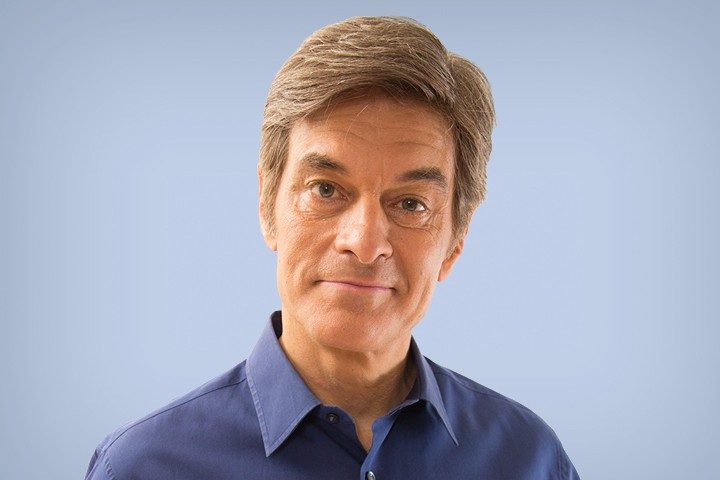
- New research from the Blue Cross Blue Shield Association (BCBSA) suggests millennials may be substantially less healthy as they age.
- Millennials aged 34 to 36 in 2017 were 11 percent less healthy than Gen Xers aged 34 to 36 in 2014.
- Millennials have had a double digit increase in diagnoses for eight of the top 10 health conditions.
- When compared to the national population, millennials are more affected by behavioral health conditions than physical, with the highest increases shown in rates of major depression and hyperactivity.
Although millennials may seem to have a greater investment in health and wellness than generations before them, findings from the Blue Cross Blue Shield Association (BCBSA) suggest millennials will be substantially less healthy as they age.
The report defines the following as the top 10 conditions affecting millennials, ranked by adverse health impact:
- Major depression
- Substance use disorder
- Alcohol use disorder
- Hypertension
- Hyperactivity
- Psychotic conditions
- Crohn’s disease and ulcerative colitis
- High cholesterol
- Tobacco use disorder
- Type 2 diabetes
“While the top 10 conditions affecting millennials are not necessarily surprising, what is shocking is the prevalence rates for each of these conditions in millennials when compared to rates for previous generations,” Dr. Vincent Nelson, vice president of medical affairs for the BCBSA, told ETI.
Millennials aged 34 to 36 in 2017 were 11 percent less healthy than Gen Xers aged 34 to 36 in 2014, and had a double digit increase in diagnoses for eight of the top 10 health conditions.
Still, 83 percent of the 55 million millennials surveyed in 2017 considered themselves in good or excellent health, despite the BCBSA analysis revealing otherwise.
“Because significant health challenges are rising among millennials earlier than in previous generations, we must address these issues now,” said Nelson.

Mental health conditions hit millennials hardest
When compared to the national population, millennials are more affected by behavioral health conditions than physical, with the highest increases shown in rates of major depression and hyperactivity.
“While we may be seeing moderate diagnosis impact across all generations for previously stigmatized behavioral health conditions, millennials are seeing higher growth in prevalence than either Gen X or baby boomers,” said Nelson.
Major depression, substance abuse disorder, and alcohol use disorder were the top three conditions for millennials.
Deborah Serani, PsyD, professor at Adelphi University and award-winning author of “Living with Depression,” says the prevalence of these conditions among millennials doesn’t surprise her.
She believes the following circumstances in which millennials grew up are contributing factors:
1. Technological advances
Because of technology, millennials were the first generation to grow up without learning how to maintain eye contact, become adept at reading facial expressions, or deepen awareness of the textures of emotions within themselves or others.
“This lack of emotional awareness, clinically called alexithymia, makes it hard for millennials to understand their thoughts and feelings,” Serani told ETI.
2. Media overload
Serani says the media explosion of the internet created a 24-hour news cycle, which allowed millennial kids to access fearful news.
“Stories of terrorism, natural disasters, or catastrophes that were nonexistent generations ago, are now available around the clock,” Serani said. “Feelings of helplessness, hopelessness, and fear regarding these events permeated into the world of millennials either by witnessing such stories themselves, or through the contagious fear reactions from adults in their family circle.”
3. Everyone wins mentality
Serani says learning how to win or lose was replaced by the safety zone of the reset and pause button.
“‘Everyone gets a trophy’ or ‘there are no strikeouts’ impedes the natural learning curve of dealing with failure and building resiliency. As a result, many millennials encounter difficulty tolerating stressful events, frustrating easily, and avoiding demands so as not to feel overwhelmed,” said Serani.
4. Two-income households
As more parents began working to meet financial demands, Serani says the millennial generation experienced a change that generations before didn’t have to.
“Not having the ease that previous generations had, like family dinner time and predictable work and weekend hours, created a more solitary world for millennials, wrapping them in a bubble of avoidance and isolation even more,” she said.
5. Undefined work schedules
While many older millennials have the opportunity to work in careers that don’t have set schedules and allow for remote access, Serani says the downside is they find themselves working on weekends and during vacations.
“And as such, [they] never really have ‘away time’ to decompress or refuel. All of these instances heighten physical and emotional risk factors,” she said.
Dr. Jonathan Avery, director of addiction psychiatry at New York-Presbyterian and Weill Cornell Medicine, adds that mental illness and substance use disorders start in adolescence and affect younger people more.
“And millennials these days have a host of stressors, can be more isolated, and are exposed to a range of new, addicting devices as well,” he said.

How millennials can help themselves
Nelson says the best thing millennials can do for their health is to seek out preventive care so they receive proper diagnosis and treatment before a condition becomes unmanageable or life-threatening.
However, the BCBSA survey found that one-third of millennials don’t have a primary care provider, and most do not receive regular preventive care. Furthermore, most millennials only visit a doctor when they’re sick or something is broken.
“Millennials are impacting not only their immediate health, but also their long-term health by not seeking preventative care,” said Nelson. “I would encourage all millennials to find and regularly consult a primary care provider if they do not already. You never know when you may need care, and many conditions can be treated more efficiently, and at a more affordable price, if brought to a physician’s attention early on.”
Serani agrees, noting that the biggest barrier she experiences with millennials is that they can’t afford to pay for psychotherapy.
“They aren’t commanding the kind of salaries generations ago earned, and it just costs more to live now than compared to years ago,” she said. “Research also suggests that ‘cause’ motivates millennials more than ‘loyalty.’ Often, millennials don’t cultivate relationships with health professionals, which would lead to more streamlined care and consistent well-being.”
She also encourages millennials to practice self-care.
“Self-care is a learned behavior. It isn’t something that just occurs. [Millennials should] focus on [incorporating] self-care skills like mindfulness, good eating, healthy sleep, and exercise into their life not for the short run, but as a long-term commitment,” she said.
Unplugging from technology, work, and media, and replacing those with meaningful face-to-face time with others are other forms of self-care, Serani recommends.
Avery adds that millennials can help reduce the stigma around mental illness by prioritizing their mental health, being open about their struggles, and getting help when they feel unwell or stressed.
“Nobody is immune to mental illness and substance use disorders. [Millennials] should learn the signs and symptoms of these disorders in themselves and their peers,” he said.
How healthcare can change to help more millennials
To gain a better understanding of the decline in millennial’s health across all illnesses, Nelson says BCBSA held sessions with companies across the country.
“It didn’t take long for attendees to conclude that the current health system doesn’t appear to be working for millennials — who, at the end of the day, want care that is welcoming, convenient, and integrated,” said Nelson.
He says the following were takeaways about how to better address current millennial lifestyles:
- Millennials want to be met where they are with access to their own health records and convenient care, including telemedicine — they don’t want another app to download.
- Because millennials are disproportionately affected by behavioral health conditions, they prefer a holistic approach to their health that integrates both mind and body.
- Millennials are much more comfortable in a friendly environment, which helps them trust providers to understand their culture, race, socioeconomic status, and sexual and gender identity.
- Millennials would rather work in environments able to address behavioral health and its underlying issues without stigma.
When it comes to depression, Nelson says while 89 percent of American adults consider depression a very serious or somewhat serious condition, the majority believe not enough resources are being allocated to depression.
“One particularly troubling trend we’ve identified is that 1 in 5 millennials diagnosed with major depression are not seeking any form of treatment,” said Nelson. “BCBSA’s study of major depression found the condition can rob people of 9 or more years of healthy life, so it’s imperative to allocate research and resources to new treatments as more millennials are diagnosed with this and other behavioral health conditions.”
Serani notes that of the millennials who do seek out psychotherapy for mental health conditions, they use the treatment differently than previous generations.
“They come in for the quick fix, and aren’t really interested in the long haul of getting to the root of issues,” Serani said. “Mental health therapists need to be aware of this trend, and to try to help millennials understand that they’ll spend less time in psychotherapy and more time living a meaningful life if they put in longer hours on the couch, so to speak.”
According to Avery, improvement in screening methods is critical.
“We should be screening all patients, especially younger individuals, for mental illness and substance use disorders at all treatment encounters,” he said. “We also need to prioritize creating more treatments and access to these treatments.”

You can check out the latest casting calls and Entertainment News by clicking: Click Here
Click the logo below to go to the Home Page of the Website
Click the logo below to follow ETInside on Twitter
Click the logo below to follow ETInside on Facebook
Click the logo below to follow ETInside on Instagram
Click the logo below to follow ETInside on Pinterest
Click the logo below to follow ETInside on Medium















